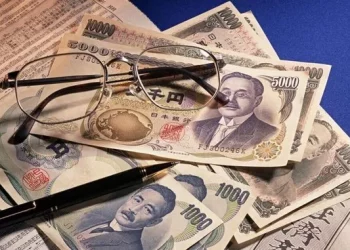In today’s globalized economy, currency exchange plays a significant role in international trade, investment, tourism, and even online shopping. Whether you’re a traveler planning a holiday to Australia, a business person engaged in cross-border trade, or simply someone curious about the exchange rate between two major world currencies, understanding how to convert US dollars (USD) to Australian dollars (AUD) is essential.
Introduction to Currency Conversion
Currency conversion refers to the process of changing one currency into another. This happens in the foreign exchange (Forex) market, the world’s largest and most liquid financial market, where currencies are traded in pairs, such as USD/AUD. The exchange rate between two currencies determines how much of one currency is needed to buy a unit of another currency.
For example, if the exchange rate between the US dollar (USD) and the Australian dollar (AUD) is 1 USD = 1.50 AUD, this means that for every US dollar, you can receive 1.50 Australian dollars.
The Importance of Exchange Rates
Exchange rates are influenced by a variety of factors, including interest rates, inflation rates, economic stability, and market speculation. Because these factors change constantly, exchange rates fluctuate, which can lead to gains or losses for traders, investors, or individuals who need to convert currencies.
For instance, the exchange rate between the US dollar and the Australian dollar has fluctuated over time due to differences in the economies of the United States and Australia. As a result, $88 USD will not always convert to the same amount in AUD. It’s crucial to stay updated on the latest exchange rates to get an accurate conversion.
Historical Context of the USD/AUD Pair
To understand the value of $88 USD in AUD, it’s helpful to consider the historical relationship between the US dollar and the Australian dollar. Historically, the exchange rate between the USD and AUD has been volatile. For much of the late 20th century, the exchange rate fluctuated between 1.2 and 1.6, meaning that 1 US dollar would be worth between 1.2 and 1.6 Australian dollars.
However, during the 21st century, the AUD strengthened relative to the USD, with the exchange rate often reaching parity (1:1), and at times, the AUD was worth more than the USD. For instance, in 2011, the exchange rate reached near parity, with 1 USD equaling approximately 1 AUD. This parity was a significant event in Forex markets and was a result of the Australian economy’s strong performance, particularly in commodities like mining and natural resources, and the US’s struggle with debt and recession during that period.
In recent years, the exchange rate has ranged between 0.70 and 0.80, meaning that 1 USD typically exchanges for 0.70 to 0.80 AUD. This reflects ongoing economic factors such as interest rates, inflation, and central bank policies in both countries.
How to Convert $88 USD to AUD
To convert $88 US dollars into Australian dollars, you’ll need to know the current exchange rate between the USD and the AUD. The easiest way to do this is by checking the latest exchange rate using an online currency converter, financial news websites, or your bank’s foreign exchange services.
Let’s assume the exchange rate between USD and AUD is 1 USD = 1.50 AUD for this example. To convert $88 USD into AUD, you would simply multiply the amount in USD by the exchange rate:
88 USD×1.50 AUD/USD=132 AUD
Thus, $88 USD would be equivalent to 133.50 AUD at this exchange rate.
However, if the exchange rate were different, say 1 USD = 1.30 AUD, the calculation would look like this:
88 USD×1.30 AUD/USD=114.4 AUD
As you can see, the value of $88 USD in AUD can vary depending on the exchange rate at the time of conversion.
Factors That Influence the USD/AUD Exchange Rate
The exchange rate between the USD and the AUD is influenced by several factors, both domestic and international. Understanding these factors can help explain why the value of $88 USD changes over time in terms of AUD.
1. Interest Rates
Interest rates set by central banks, such as the US Federal Reserve and the Reserve Bank of Australia, have a direct impact on exchange rates. When the US Federal Reserve raises interest rates, it often leads to an increase in the value of the US dollar because higher interest rates attract foreign investment. Conversely, if the Reserve Bank of Australia raises interest rates, the Australian dollar might appreciate against the US dollar.
2. Inflation Rates
Inflation is the rate at which prices for goods and services rise and, subsequently, the purchasing power of currency falls. Countries with lower inflation rates typically see their currency value increase relative to higher-inflation countries. If the US experiences higher inflation than Australia, the USD may weaken against the AUD.
3. Economic Performance and Stability
The overall economic health of a country plays a crucial role in determining the strength of its currency. A robust economy tends to attract foreign investment, increasing the demand for its currency. For example, if Australia’s economy is performing well, especially in sectors like mining and exports, the Australian dollar may appreciate, affecting the USD/AUD exchange rate.
4. Commodity Prices
Australia is a major exporter of commodities, including iron ore, coal, and gold. As such, commodity prices can have a significant impact on the Australian dollar. When commodity prices rise, Australia’s economy tends to benefit, and the AUD can strengthen. Conversely, when commodity prices fall, the AUD may weaken.
5. Political Factors and Global Events
Political stability and global events, such as trade agreements, elections, and geopolitical tensions, can influence the value of currencies. For instance, if there is political uncertainty in the US, the USD might lose value compared to the AUD, and vice versa.
6. Market Sentiment and Speculation
Currency values can also be influenced by market sentiment and speculation. Traders in the Forex market constantly buy and sell currencies based on predictions of future economic conditions. If traders expect the US dollar to weaken in the future, they may sell USD, causing the currency to lose value against other currencies, including the AUD.
Why Exchange Rates Matter for Individuals and Businesses
Exchange rates can have a significant impact on individuals and businesses involved in international trade, travel, or investment.
1. For Travelers
If you are planning a trip to Australia, the exchange rate will determine how much money you’ll have in Australian dollars once you exchange your US dollars. A favorable exchange rate means that you will receive more AUD for each USD, giving you more spending power while traveling. On the other hand, an unfavorable exchange rate means you’ll get less AUD for your USD.
2. For Businesses
Businesses involved in importing or exporting goods between the US and Australia need to be aware of exchange rate fluctuations. If a business in the US imports products from Australia, a stronger AUD means that the cost of goods in US dollars will increase. Similarly, businesses in Australia that export goods to the US may benefit from a stronger USD, as their products will be cheaper for American buyers.
3. For Investors
Investors who hold assets in foreign currencies or international stocks need to consider how exchange rates affect their returns. If the value of the AUD rises relative to the USD, Australian investments may appear more attractive to foreign investors, and US investors may see the value of their Australian holdings increase when converted back into USD.
How to Minimize Exchange Rate Risks
For businesses and individuals exposed to foreign exchange risk, there are several strategies that can help minimize the impact of currency fluctuations:
1. Hedging
Hedging involves using financial instruments, such as futures contracts, options, or forward contracts, to lock in an exchange rate for a future date. This strategy helps businesses and investors protect themselves against unfavorable exchange rate movements.
2. Diversification
Diversifying investments across different currencies or markets can help mitigate the risks associated with currency fluctuations. By holding a portfolio of assets denominated in different currencies, investors can reduce their exposure to the risk of a single currency’s decline.
3. Timing the Market
If you’re an individual or business needing to exchange currency, paying attention to exchange rate trends and timing your transactions when rates are favorable can help you get the most value for your money.
Conclusion
The value of $88 USD in Australian dollars depends on the current exchange rate, which fluctuates based on various economic, political, and market factors. To convert $88 USD to AUD, you simply need to multiply the amount by the prevailing exchange rate, but it’s essential to stay informed about the latest market conditions. Understanding the factors that influence exchange rates can help individuals and businesses make informed decisions about currency conversion and minimize risks associated with currency fluctuations.
Whether you’re a traveler planning your next trip to Australia, a business engaged in international trade, or an investor looking to diversify your portfolio, understanding how currency conversion works and how exchange rates impact your finances is key to navigating the global economy effectively.
Related Topics:



























